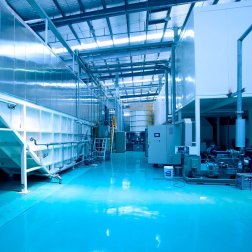 Surveyors and civil engineers are the unsung heroes behind the development of our modern infrastructure. They play a critical role in ensuring that buildings, roads, bridges, and other structures are constructed accurately and safely. One of the key aspects of their work is land surveying, a practice that has evolved significantly over the years. Today, surveyors and civil engineers use complex equipment to map landscapes with precision and efficiency, a far cry from the tools used in the 1980s.
Surveyors and civil engineers are the unsung heroes behind the development of our modern infrastructure. They play a critical role in ensuring that buildings, roads, bridges, and other structures are constructed accurately and safely. One of the key aspects of their work is land surveying, a practice that has evolved significantly over the years. Today, surveyors and civil engineers use complex equipment to map landscapes with precision and efficiency, a far cry from the tools used in the 1980s.
Evolution of Surveying Equipment
In the 1980s, surveying equipment was considerably less advanced than it is today. The primary tools at a surveyor’s disposal were theodolites and tape measures. Theodolites, also known as transit theodolites, were used to measure angles both horizontally and vertically. These heavy instruments required a sturdy survey tripod with elevating features and manual adjustments. Tape measures, on the other hand, were used for measuring distances on the ground. While they were simple and reliable, they were limited in their accuracy, particularly over long distances.
Fast forward to the present day, and surveyors are equipped with a wide range of cutting-edge technology that has transformed the field. Global Positioning System (GPS) is not new but how it is now being used for survey tools has advanced greatly. Today’s GPS devices used in land surveying equipment has become a game-changer, allowing surveyors to determine precise coordinates on the Earth’s surface. Modern GPS equipment is highly accurate, with the ability to pinpoint locations to within a few millimeters. Yes, we said millimeters!
In addition to GPS, total stations have revolutionized land surveying. A total station combines electronic distance measurement (EDM) with the functionality of a theodolite. Surveyors can measure distances and angles with remarkable precision, and many total stations even have built-in data collectors for real-time data recording.
Another significant advancement is the use of drones in land surveying. Unmanned aerial vehicles (UAVs) equipped with cameras and surveying software can capture high-resolution aerial imagery and create detailed 3D maps of landscapes. This technology not only improves accuracy but also enhances safety by reducing the need for surveyors to work in potentially hazardous environments.
Traditional Tools form the !980’s Still Relevant
Despite the incredible advancements in surveying technology, some traditional tools are still in use today, and there is even a market for antique theodolites for sale. Theodolites have come a long way since the 1980s, and modern versions are far more compact, lightweight, and accurate. They often come with digital displays and the ability to connect to other surveying equipment, making data collection and analysis more efficient.
The surveying compass is another essential tool in a surveyor’s arsenal. These compasses help determine magnetic bearings and angles, which are useful for orientation and direction measurements. Modern surveying compasses are more reliable and precise than their predecessors, ensuring that surveyors can maintain accurate bearings even in challenging environments.
When it comes to land surveying equipment, there is a wide array of options available. Total stations, as mentioned earlier, are a cornerstone of modern surveying. These devices are versatile and can be used for various applications, including topographic mapping, boundary surveys, and creating a construction layout.
In addition to total stations, surveyors rely on certain leveling instruments, which are used to establish accurate elevations, and electronic data collectors for efficient data management. Ground-penetrating radar (GPR) is yet another innovation that helps surveyors detect subsurface objects and features, making it invaluable for archaeological surveys and utility mapping.
Surveyors and civil engineers have witnessed a remarkable transformation in measuring instruments for land surveying used to map landscapes and create accurate survey data. From the rudimentary instruments of the 1980s to today’s sophisticated GPS enabled devices, total stations, and drone technology, the field has progressed significantly. While traditional tools like theodolites and surveying compasses still hold value, they have evolved to meet the demands of modern surveying practices. As we continue to push the boundaries of precision and efficiency in land surveying, the future promises even more exciting advancements in equipment and technology.












 In the intricate world of metal finishing, access to quality
In the intricate world of metal finishing, access to quality